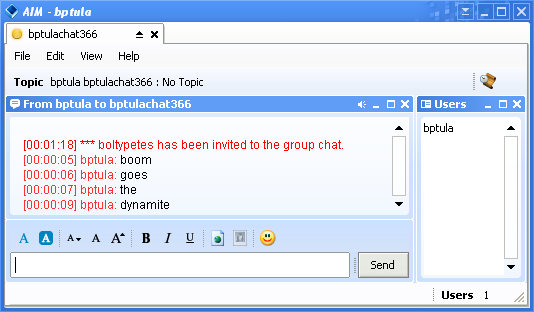
In our continuing “Remote is Better” series, we explain yet another benefit of remote research methodologies: since you get to talk to people who are using their own computers, you get to see all the fascinating stuff on their computer desktops and web browsers (with their permission, of course). Since we use UserVue to screenshare with the users we talk to, we can see everything on a users’ desktop while we talk to them–this is a great way to get your users talking about sites and programs they use the most, and it always gives you a sense of their computer experience and usage. (While we can’t post any of the desktops we’ve seen, I’ll be glad to offer my own: see below!)
Bookmarks. Forget personas–if you want a real in-depth look at how people use their computers, just take a look at their bookmarks. How many are there? How are they organized–are they organized? What’s especially fascinating is if you’re talking to one of your website’s power users: what other bookmarks do they have that are similar or related to your site? Get your users talking about the last time they visited those sites. You get a surprisingly rich idea of what kind of internet users they are, and what they really want out of your site.
Desktops. If bookmarks give you a good sense of the kind of things your users do online, desktops are a great way of seeing what they do offline: at a glance, you can see the shortcuts, program links, and files they’ve stowed at arm’s reach. You can even get personality hints: are you dealing with a busy professional type with a clutter problem? A compulsive neatnik? A power-using settings-tweaker? Even the desktop backgrounds can give you unexpected human touches: family photos, artwork, and vacation photos can all give you a feel for the user. Even the factory default wallpaper tells you something: Here’s a user who doesn’t want to spend all day fiddling with settings; or, here’s a user who doesn’t know how to change their background.
Usage. More than just the stuff that’s physically present on their computers, you have to pay attention to how they’re using it. Do they have a million other tabs open at the same time as yours? Do they have a computer that’s so slow, they can finish an entire Reuben sandwich while your page is loading? Do they always use their bookmarks to go straight to a page that’s four clicks deep into your navigation? Pay attention–it’s all good stuff.
Ethics. Your users are letting you into their lives; don’t abuse the access. There’s a fine line between harmlessly observing users’ technological ecosystems, and invading their privacy. Here’s one big Do and one big Don’t for gauging whether you’re on the side of Good nor Not Good, but as always, let your conscience be your guide:
DO be transparent. Users should know before the session begins exactly the kind of access you’ll have to their computer, whether or not you’ll record the session, and what you’ll do about the recording. If they’ve got questions or reservations, don’t try to strongarm them into consenting–after all, if you’re doing live recruiting, you can always just snag another user.
DON’T invade people’s privacy. Avoid bringing up any material that might make the user feel like they’re being intrusively scrutinized, or which has the potential for awkward situations. Overstepping your bounds can make your user feel anxious, untrusting, and defensive, where what you want is casual, warm, and relaxed. Examples of things you DON’T want to say: “Hey, I see there in your web history that you just went shopping for underpants! Want to tell me all about it?”, “Can you show me what’s in all those image files on your desktop?”
Keeping your eyes open for the right details on your users’ computers can help give you a more complete picture of the real people who are using your website or software product. We’re all for anything that puts
the emphasis back on treating users like people, rather than like talking pinatas that you whack opinions out of.









